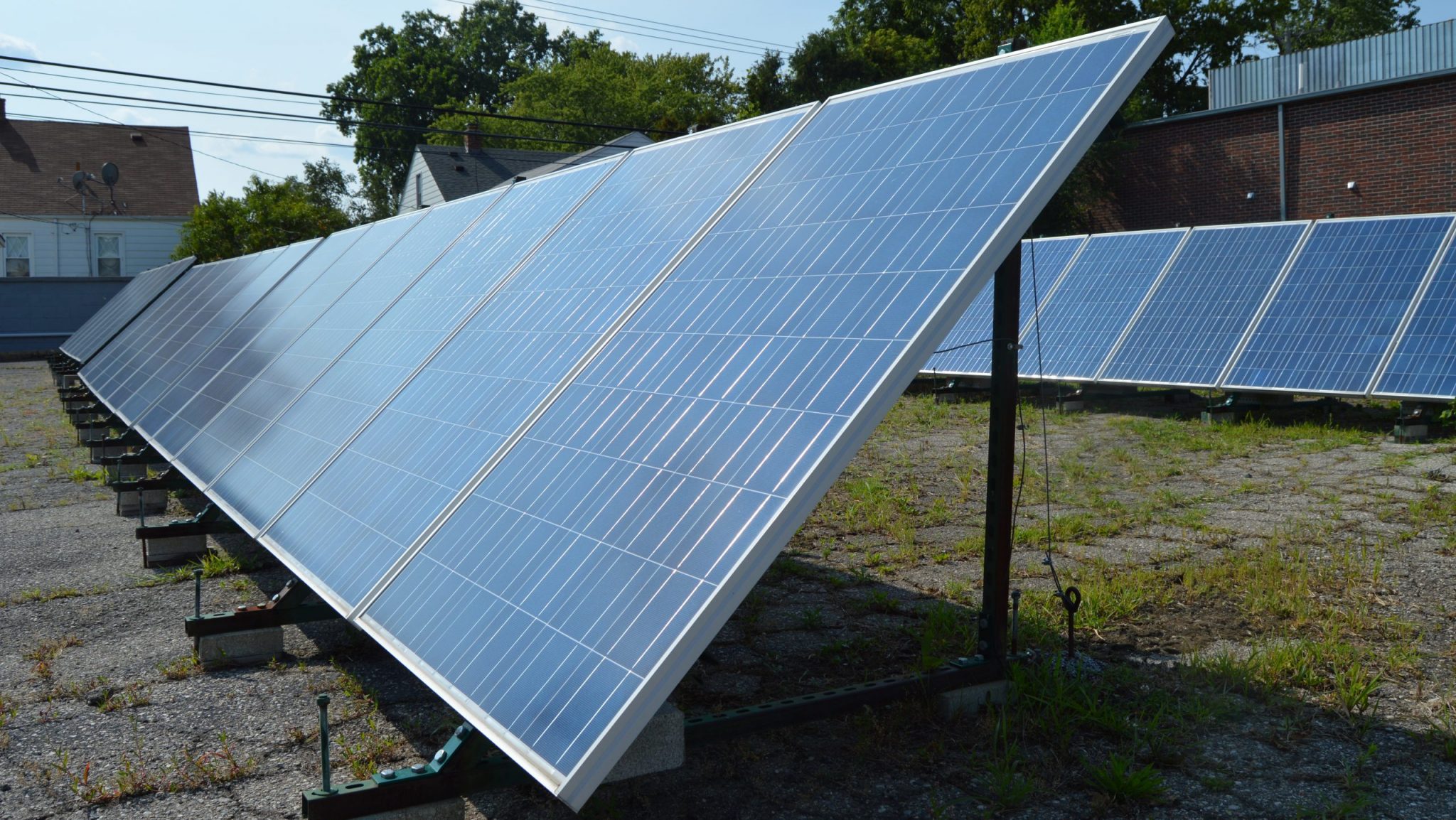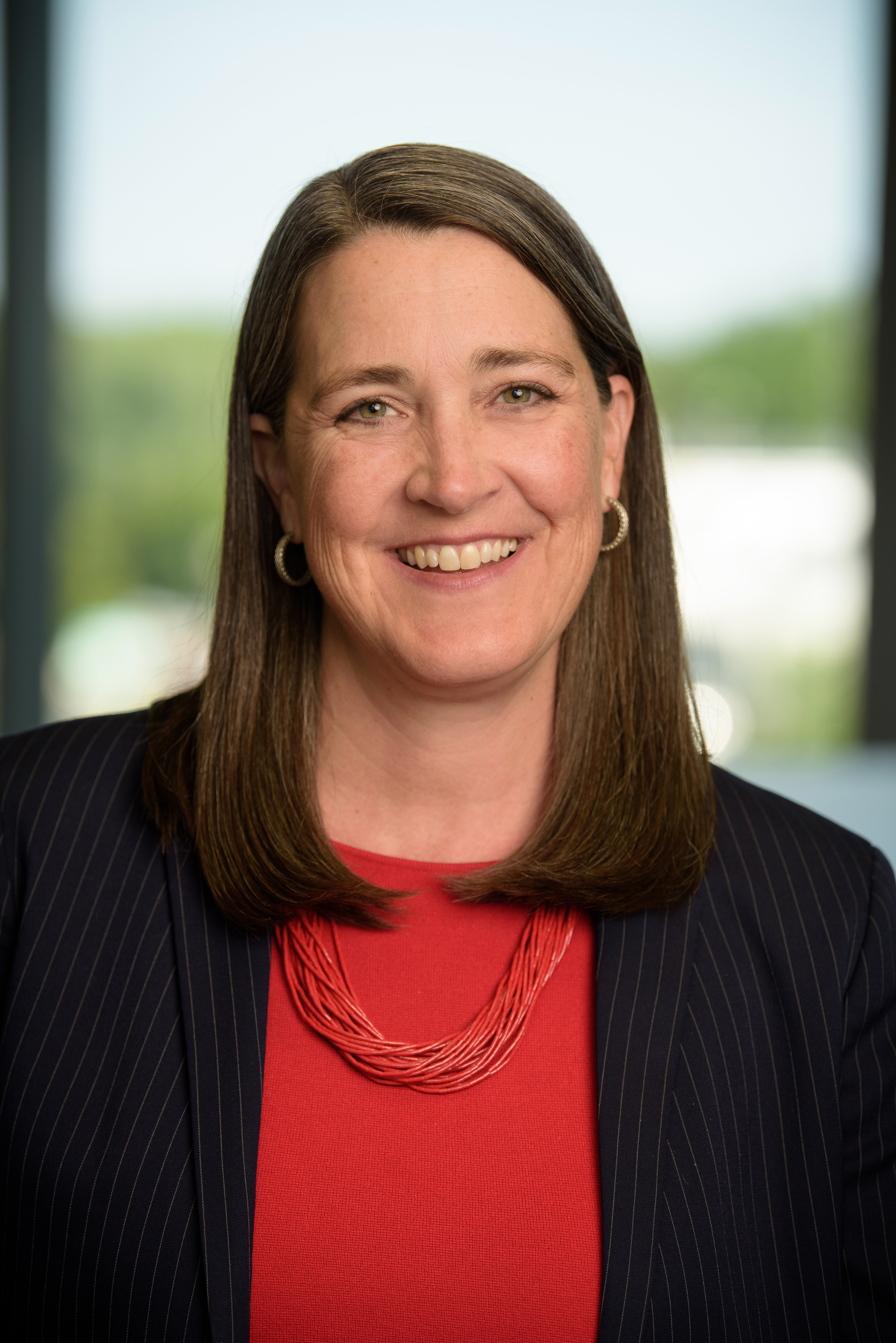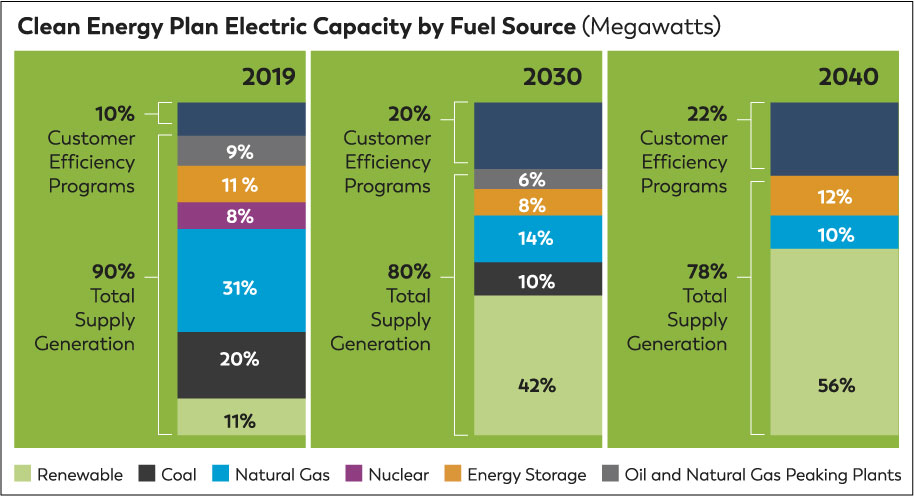Consumers Energy CEO Aims to Close Coal Plants by 2040, Cautious on Nuclear
WDET’s Pat Batcheller spoke with Consumers Energy chief Patti Poppe on how the company plans to address climate change by diversifying energy sources and pushing customers to use less power.

The head of Michigan’s second-largest energy producer says climate change is real, and her company has a responsibility to do something about it.
“I imagine a day when I’m in the garden with my granddaughter,” says Consumers Energy CEO Patti Poppe. “And she might look up at me and say, ‘Grandma, what is climate change?’ And I’ll be able to say, ‘that’s something we fixed a long time ago.'”
Support the news you love.
Here at WDET, we strive to make our journalism accessible to everyone. As a non-profit public media institution, we maintain our journalistic integrity through independent support from readers like you. Because you value WDET as your source of news, music, and conversation, please make a gift of support today. Even $5 helps!
Toward that end, Consumers plans to close its five remaining coal-burning electricity plants in Michigan by 2040. At the same time, Poppe says the company will replace those facilities with renewable energy generators, mostly solar.
“We have a philosophy at Consumers Energy that we should, at all times, serve people, planet and prosperity.” – Patti Poppe, CEO

“By 2030, we’ll have 5,000 megawatts of solar energy added to the system,” Poppe says. “That will take us to over 40 percent of the energy we produce being renewable.”
She adds the Consumers will also reduce emissions by 80 percent over the next decade, use less water, and send less waste to landfills.
Poppe has been traveling the Lower Peninsula, meeting customers in Consumers Energy’s 68-county service area. She says the company will do its part, but says users should also embrace the shift to renewable energy and a cleaner planet.
“I’m not talking about being uncomfortable, or being cold in the winter or hot in the summer,” Poppe says. “But there are things we can do together to eliminate energy waste.” She says customers can save money by using LED lighting, smart thermostats, and good insulation.
It’s good business
Poppe says the shift toward producing more renewable energy and less energy waste is good for Consumers Energy’s bottom line. She also says being a leader in cleaner energy will attract other businesses to Michigan.
“Our business customers are asking for cleaner energy,” Poppe says. “They’re growing their businesses here in Michigan, so it’s good for their prosperity.”

By 2040, Consumers Energy expects to generate more than 50 percent of its electricity using renewable energy. The rest will come from natural gas, which accounts for about 11 percent of the company’s production now.
Poppe says solar panels require a lot less land than wind farms.
“The cheapest and cleanest kilowatt is the one we never use.” — Patti Poppe, Consumers Energy CEO.
“A megawatt of electricity produced by solar power takes about six acres,” Poppe says. “The same unit takes about 20 acres when produced by wind.”
Poppe says nuclear power generation is not in the company’s future. Right now, about eight percent of Consumers Energy’s supply comes from the Palisades nuclear plant near South Haven, Mich. In a few years, that number will drop from eight to zero. Louisiana-based Entergy, which owns Palisades, plans to close it in 2022. Nuclear energy advocates say it’s cheap, clean, and efficient. Poppe says building a nuclear plant is quite expensive, while storing radioactive waste presents economic and environmental challenges.
Click on the player above to hear Patti Poppe’s conversation with WDET’s Pat Batcheller, and read a transcript, edited for clarity, below.
WDET: What are you asking your customers to do?
Patti Poppe, Consumers Energy CEO: We’re going to be in partnership with our customers. We’re going to handle the “clean” part. We’re retiring our coal plants, replacing them with exclusively new renewable energy, mostly solar. But at the same time, we have the opportunity for customers to both save money and energy by reducing their usage in a smart way. I’m not talking about being uncomfortable, or being cold in the winter or hot in the summer. But there are things we can do together to eliminate energy waste, and therefore, prevent the need to build three additional new plants.
Give me an example of something customers can do.
A very simple thing is having good insulation and good lighting in your home. LED lighting. The price has dropped dramatically, so the economics are good. We helped incentivize those LED bulbs at Home Depot, Lowe’s, Menards and Meijer. You can get discounted LED lights for your home, and that has a big effect. Lighting is one of the top energy uses. And great insulation, and a simple smart thermostat.
What steps will Consumers Energy take in changing the way it generates power?
We’ve already retired 7 of our 12 coal-fired power plants. A lot of people don’t know that. We’re already under 20 percent of peak capacity generated and delivered by coal. That makes us one of the leaders in the nation for cleaner energy sources. Our remaining 5 plants, we’ve announced scheduled closure dates. And we’re adding a lot of solar. By 2030, we’ll have 5,000 megawatts of solar energy added to the system. That’ll take us to over 40 percent of the energy we produce being renewable. We’re excited about that. We’re excited about leading, and the positive effects on the environment.
Emissions will be reduced 80 percent by 2030. We also reduce our water use dramatically, as well as waste-to-landfill and other particulates created when you use coal as a fuel source. Our aggressive timetable for the retirement of our coal plants really puts Michigan in a great leadership position for clean energy.
Why are you doing this?
We have a philosophy at Consumers Energy that we should, at all times, serve people, planet and prosperity. We believe that climate change is happening. We believe as an energy provider, we must make sure we’re doing our part to eradicate climate change. I imagine a day when I’m in the garden with my granddaughter, or my great-granddaughter, and she might look up at me and say, “Grandma, what is climate change?”, and I’ll be able to say “that’s something we fixed a long time ago.”
How will this plan affect the company’s bottom line — profits?
It’s good for the bottom line.
Just [focusing on] the bottom line is not the best way to run a business. We run by a triple bottom line: People, planet and prosperity are all enhanced. People — our customers, our community — will spend less on this clean energy. It’s not more expensive, it’s actually more affordable. So we can have clean, affordable energy that’s good for people. We can make sure that our carbon emissions, our water usage, our waste-to-landfill are all dramatically reduced. That’s good for the planet. And we think that being clean energy leaders attracts other businesses to come to Michigan. We’ve seen that already. Our business customers are asking for cleaner energy. They’re growing their businesses here in Michigan, so it’s good for their prosperity. Our triple bottom line leads to prosperity for our customers, which leads to prosperity for Consumers Energy. We’re playing the long game. We’ve been here for 130 years, we intend to be here another several generations. And the best way to do that is to make sure our customers are winning.
Eight percent of the power you produce comes from nuclear plants. That number will be zero by 2030. Nuclear energy advocates say it’s a clean resource, that’s also cheap and efficient. France gets most of its electricity from nuclear power. Why isn’t nuclear part of your long-term plans?
We don’t actually own the nuclear plants that provide power for our customers. That plant [Palisades] is owned by Entergy, a big energy company in Louisiana. We have a contract with them, but they’ve announced the closure of that plant in 2022. The economics of nuclear power are very challenging. It’s very expensive [to produce]. People ask me, “would you build a nuclear plant?” We’re not planning to build one. But I know there’s a lot of research happening on small modular reactors. Maybe someday, they’ll be more economical. But it’s not in our plan today. The risk [getting rid of nuclear waste] can be very high. We’re very excited about having these “fuel-free” resources like solar and wind. And when you use technology with smart thermostats, helping customers use less energy, that means we need less energy supply. The most important thing all of us can do is to eliminate energy waste. The cheapest and the cleanest kilowatt is the one we never use. That’s why we’re excited about getting customers signing up for our clean energy movement. There are so many things we can do to help people eliminate energy waste, and that’s just great for Michigan.
You also provide natural gas. Is this plan strictly related to electricity?
We do have energy efficiency programs for natural gas, as well. All of our customers can reach out and sign up. Eliminating energy waste on the electric and the natural gas side is very good for the environment and very good for their bottom line.
Much of your service area covers lower Michigan outside Metro Detroit. You serve a lot of rural areas that have wind farms. When you meet customers in those areas, do you encounter opposition or resistance to wind turbines?
It’s a mixed bag. There are parts of the state where our customers are really happy for our wind turbines being in their area. They’re proud of the commitment. But I will say they’re not as land-efficient as solar. A megawatt of electricity produced by solar energy takes about six acres. The same unit takes about 20 acres when produced by wind. There is some fatigue starting to occur in communities for siting of wind turbines. Solar is particularly well-suited to serve Michigan’s peak demand for electricity, which happens on summer days. Residential air conditioning almost doubles our energy demand on a couple days a year. That load is best served by solar, because the sun is shining on those days.
What happens when the sun isn’t shining, how do you ensure people have power?
One of the greatest engineering marvels ever produced is here in Michigan. It’s the Ludington Pumped Storage Plant. My peers across the country envy our plant. We have 2,200 MW. It’s the fourth-largest pumped storage facility in the world. It takes water up from Lake Michigan into a huge, 27-billion gallon reservoir up on a bluff. That water is pumped up when we have extra electricity. At night, when people aren’t using energy, we can use our wind farms to pump the Ludington plant. Then, when we have demand in the morning when people are getting ready for work or at peak time during the day, we can let gravity feed the water down that hill, and those same pump motors rotating in reverse generate carbon-free, emission-free hydro power. It’s an amazing battery up there that enables us to be leaders in this clean energy future.
